#golden-concept-india
Explore tagged Tumblr posts
Text
iPhone Case / SPC - Rose Gold

0 notes
Text
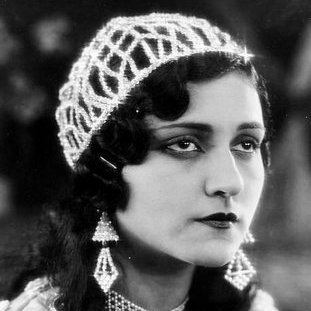
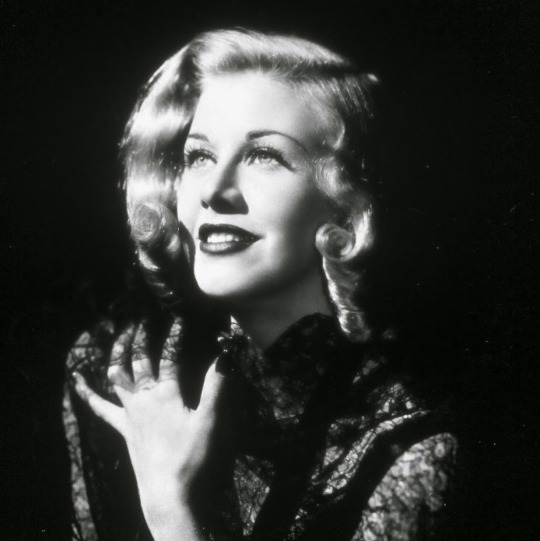
Propaganda
Ruby Myers (Typist Girl, Cinema Queen)— I just recently saw a documentary about her and thought that besides being really pretty, she had a very interesting life. She was born in the early 1900s in India to a Baghdadi Jewish family, and became the first woman to act in an Indian silent film. In the 1930s she started her own film production house, Rubi Pics, way before most female producers in Hollywood broke through. More info can be found in this Golden Globes webpage on her life [link]
Ginger Rogers (Swing Time, Top Hat)—Look I’ll level with you, I’ve never seen her in a musical and I know that she’s an amazing dancer and she’ll be even hotter when I finally watch Top Hat but I’m not submitting her as a dancer I’m submitting her as an ACTRESS. Her comic timing is impeccable!!!!! She’s full to bursting with life and in every role she seems to be having FUN, you can practically feel the twinkle in her eye. With her natural warmth it’s like she’s letting you in on the joke, y’all get to have this fun together! Making me laugh is hot!!! [If you'd like to see Ginger dance, videos below the cut]
This is round 2 of the tournament. All other polls in this bracket can be found here. Please reblog with further support of your beloved hot sexy vintage woman.
[additional propaganda submitted under the cut.]
Ruby Myers:
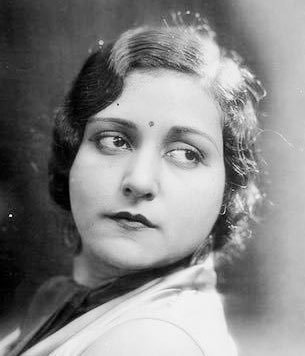
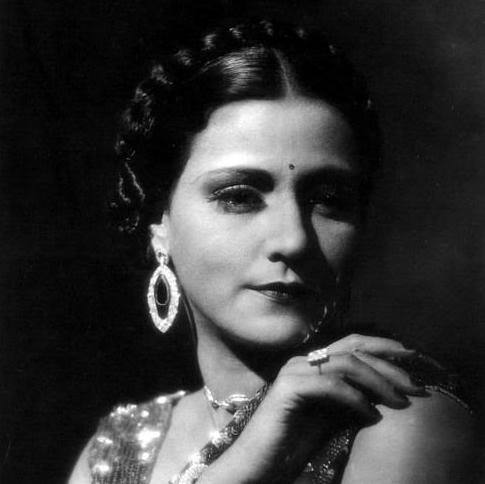
Ginger Rogers propaganda:
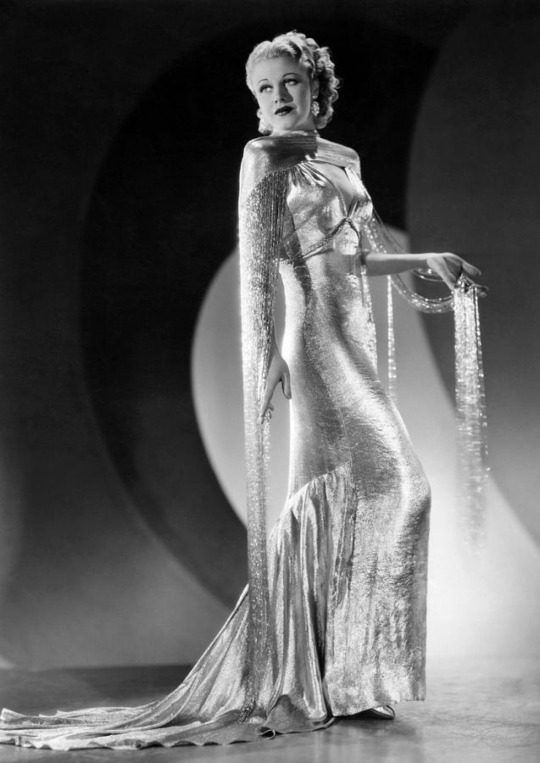
She needs no introduction! An undeniable powerhouse on the dancefloor, and no less talented an actress. I once watched a compilation of cinema's greatest dance scenes and one of her and Fred Astaire's dances was featured, and one of the talking heads said he pitied her for 'having to keep up with him' - or something to that effect. Bullshit, I cry. Ginger Rogers was his absolute equal, and underplaying her incredible skill is downright criminal. I want the 'Cheek to Cheek' sequence from Top Hat to be permanently burned into my memory.

"Backwards in high heels", as the saying goes (though the pedant in me must point out that she in fact spent her fair share of time leading or dancing side-by-side). One of the earliest twinkle-toed ladies of the silver screen, and in terms of acting/persona, her balance of wide-eyed cuteness and movie-star glamour has never quite been replicated.
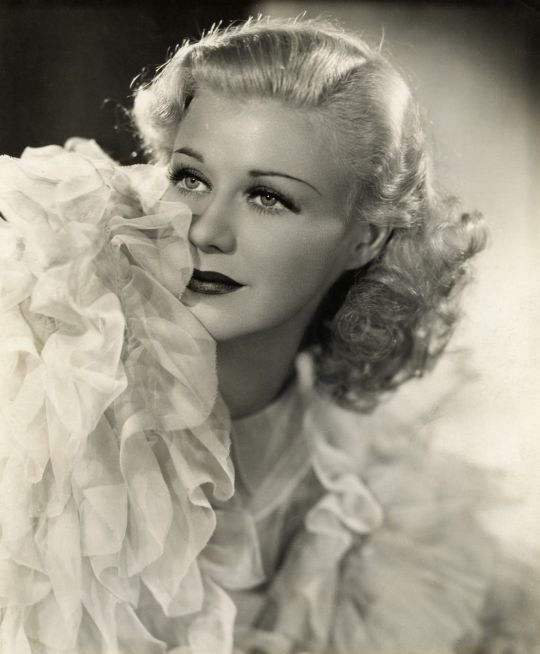
we all know her beloved string of musicals with fred but ginger also has an extensive and varied non-fred filmography that she's great in! a few ginger moments that are important 2 me personally ginger singing “we’re in the money” in gold diggers of 1933, complete with a verse in pig latin bc this whole movie is kinda mocking the concept of anyone actually being in the money in 1933; ginger and una merkel singing a verse of “shuffle off to buffalo” in 42nd street, providing some statler & waldorf-esque commentary on newlyweds from the upper berth of a railway car (interesting that belly was apparently a risque word in 1933 - maybe its bc the lyric is innuendo-ing about out of wedlock pregnancies - and that panties was a term for men’s underthings!); a favorite fred & ginger number
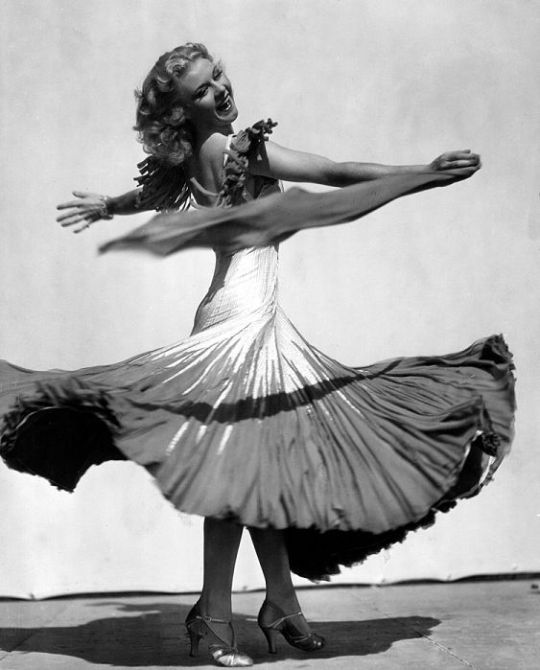
Ginger Rogers could do everything! She could sing, dance and act. She was hilarious in comedies, moving in dramatic roles (she won an Oscar for Kitty Foyle in 1940) and absolutely gorgeous!
Listen, no shade to Fred Astaire at all, but she both kept up with him step for step and then later went on to WIN AN OSCAR FOR ACTING. (which he did not.) truly a double threat!!!

One of the best dancers in Hollywood! Her work with Fred Astaire is just incredible.
ONE LINE: "Everything Fred did, Ginger did backwards and in heels" AND THEYRE RIGHT! Rogers was a total dance badass, and a lot of movie buffs know the story, but the Never Gonna Dance number from Swing Time took almost 50 takes, and allegedly by the end of filming it her white shoes had been stained pink because her feet were bleeding. As a note, she looks crazy gorgeous in this number. Watching these two dance is insane. They match up to each other in a way my mom describes as "divine" and she's right. DANCE NUMBERS!
youtube
Let's Call The Whole Thing Off (Shall We Dance, 1937, dancing starts at 3:14, they're in ROLLERSKATES)
youtube
(Ginger Rogers is the hottest woman ever to live in this number. seeing this as a teenager altered my brain chemistry)
youtube
(also watch her feet and how she moves opposite Astaire in this one. We all know our boy Freddie had that precision demon but jesus christ Miss Rogers, let a girl live!)
Pick Yourself Up, Swing Time 1936 (Everyone's seen this one but by god you are going to see it AGAIN!)
youtube
Shall We Dance, 1937 (duet begins at 2:34)
youtube
Smoke Gets In Your Eyes, Roberta 1935 (There's just something about Ginger Rogers in a slick black dress man)
youtube
The Continental, The Gay Divorcee 1934
youtube
God she's MAGIC in this one.
Gay Divorcee's Ending Montage 1934The infamous table and chairs spin happens at about 0:49. Pay CLOSE attention to her in this bc it looks like witchcraft and I feel lightheaded whenever I watch this movie bc shes THAT awesome.
youtube
She is a miracle to watch. Sorry for the sheer amount of clips. My entire family is like madly in love with Ginger Rogers.
110 notes
·
View notes
Note
Oh my god you are SO REAL for your hc that Burning Spice is hispanic
Like
Shadow Milk - French
Mystic Flour - Chinese
Silent Salt and Eternal Sugar...no idea for those two
I'm gonna use this as an excuse to say what my ethnicity hcs are for all of the virtues as well as the ethnicity of their kingdoms + some reasons why
Pure Vanilla - Greek
Hollyberry - French/Indian (rich food and wine like the french, but a hot, tropical climate with tigers like india.)
Dark Cacao - Korean
Golden Cheese - Egyptian
White Lily - Finnish (Has mythology with paganism, elves, etc)
Shadow Milk - Italian (Carnevale has lots of masks that remind me of him. Most of opera and grand orchestras are Italian also)
Mystic Flour - Chinese (Mandarin specifically, because the Silk Road first brought Buddhism to the north of China, where they speak mostly Mandarin.)
Eternal Sugar - I'm also unsure? possibly Italy as well because of the large Christian significance there.
Burning Spice - Mexican (Aztecs were in what is now Mexico.)
Silent Salt - Unsure as well. I think maybe French, seeing as that is where the concept of chivalry and Knighthood originated.
#on todays episode of no one fucking cares isssssssss#i actually had fun finally putting these headcannons down lol#pure vanilla cookie#hollyberry cookie#dark cacao cookie#golden cheese cookie#white lily cookie#shadow milk cookie#mystic flour cookie#fuck it im not tagging all the beasts
79 notes
·
View notes
Text
Nalanda: knowledge and history that was burnt to ashes
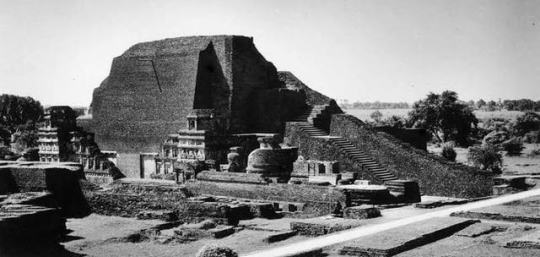
Origins of Nalanda University:
Nalanda University was founded in the 5th century CE, during the reign of the Gupta Empire, which is often referred to as a golden age of Indian culture and learning. The university was established by Kumaragupta I, a Gupta emperor, and it quickly became a prominent center for Buddhist studies. The name "Nalanda" is derived from the Sanskrit words "Nala" (lotus) and "da" (giver), symbolizing the university as a giver of knowledge.
Glory During the Gupta Empire:
Under the Gupta Empire, Nalanda flourished as a major center of learning and attracted students and scholars from various regions, including China, Korea, Japan, Tibet, Mongolia, and Southeast Asia. The university was renowned for its comprehensive curriculum, which included subjects such as philosophy, logic, grammar, medicine, mathematics, astronomy, and the arts. The institution was characterized by its impressive architecture, with numerous monasteries, temples, and libraries, and it is estimated to have housed around 10,000 students and 2,000 teachers at its peak.
Great Indian Scholars:
Nalanda was home to many great Indian scholars, including:
Nagarjuna (c. 150–250 CE): A pivotal philosopher in Mahayana Buddhism, Nagarjuna is best known for developing the concept of "emptiness" (śūnyatā) and founding the Madhyamaka school of thought, which emphasized the middle path between existence and non-existence.
Vasubandhu (c. 4th–5th century CE): A prominent philosopher and one of the founders of the Yogacara school of Buddhism, Vasubandhu made significant contributions to Buddhist philosophy and psychology. His works, including the "Abhidharmakosa," are foundational texts in Buddhist studies.
Dharmakirti (c. 7th century CE): An influential logician and epistemologist, Dharmakirti's writings on logic and perception shaped Buddhist philosophy and had a lasting impact on Indian and Tibetan thought.
Shantarakshita (c. 8th century CE): A philosopher and abbot of Nalanda, Shantarakshita played a crucial role in the spread of Buddhism in Tibet and is known for his works on logic and philosophy.
Visits from Monks and Scholars:
Nalanda became a melting pot of cultures and ideas, drawing many eminent scholars and monks. Notable figures include:
Xuanzang (Hsuan-tsang): A Chinese Buddhist monk who traveled to India in the 7th century to study at Nalanda. His detailed accounts of his journey and the teachings he encountered are invaluable historical documents that provide insight into the university's operations and the broader cultural context of the time.
Yijing (I-tsing): Another Chinese monk who visited Nalanda in the late 7th century, Yijing studied Sanskrit and Buddhist texts and later wrote about his experiences, contributing to the understanding of Buddhist practices and education in India.
Atisha: A Tibetan scholar who studied at Nalanda in the 11th century, Atisha played a crucial role in the transmission of Buddhism to Tibet.
Books and Manuscripts:
Nalanda was renowned for its vast library, known as Dharmaganja, which housed thousands of manuscripts and texts on various subjects. Scholars at Nalanda produced and preserved a wealth of knowledge, including commentaries on Buddhist scriptures, philosophical treatises, and scientific works. The library was said to contain texts in multiple languages, including Sanskrit, Pali, and Tibetan, making it a crucial repository of knowledge in ancient India.
Destruction of Nalanda:
The destruction of Nalanda University in the late 12th century was a catastrophic event that not only marked the end of one of the world's oldest centers of learning but also resulted in the irrevocable loss of a vast repository of knowledge. The university, which had flourished for several centuries, was renowned for its extensive library, Dharmaganja, which housed thousands of manuscripts covering a wide range of subjects, including philosophy, medicine, mathematics, astronomy, and Buddhist texts.
The library was said to have been so vast that it took months to burn all the manuscripts after the invasion, symbolizing the immense loss of intellectual heritageThe invasion by Bakhtiyar Khilji in 1193 was a turning point for Nalanda. Khilji's forces not only destroyed the physical structures of the university but also targeted the scholars and monks who had dedicated their lives to the pursuit of knowledge.
Many were killed, while others fled to different regions,the destruction of Nalanda also meant that many original texts and commentaries were lost forever, resulting in a significant gap in the historical and philosophical understanding. The tragedy of Nalanda serves as a poignant reminder of the fragility of knowledge and the importance of preserving cultural and intellectual heritage.
20 notes
·
View notes
Text
Bestiaryposting Results: Mlekragg
Unsurprisingly, multiple people read the entry and immediately clocked what this was. (Thank you for not actually making a guess in text, so that people who don't recognize it are able to work without that preconception.) I didn't want to leave it out, because the mythological ones are fun, but unlike some of the others, the modern conception of this beast is pretty much exactly what the bestiary says.
Anyway, as always, if you don't know what I'm talking about, you can find an explanation for this whole thing at https://maniculum.tumblr.com/bestiaryposting. If you want to join in, the new entry for each week is tagged with "maniculum bestiaryposting" so it should be findable. This week's entry can be reviewed here:
Below the cut you will find the drawings responding to it, in roughly chronological order:

@silverhart-makes-art (link to post here) decided to branch out in an unusual direction with this one, in order to avoid drawing the creature they'd identified from the entry and also have some fun with it. I just think this is some quality creature design. Love the mask-thing, love the springy tail, and that's a really good rendering of a cuttlefish face IMHO. There's a really interesting explanation for all of these features, what inspired them and how it all works together, in the linked post, which you should go read.
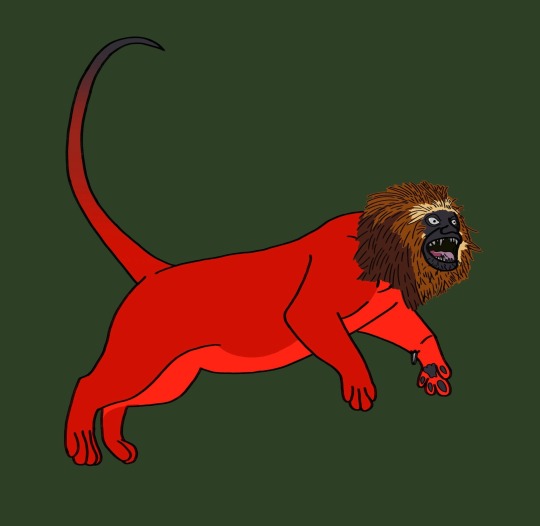
@moonygryffin (link to post here) took a more direct approach, with the twist that the creature here is modeled on American fauna rather than ones the medieval Europeans would have been aware of. The body is a mountain lion, and the man-like head is a golden-headed lion tamarin, which of course comes with its own mane. I enjoy the choice to not use a lion lion, but rather two animals with "lion" in their name; also I've always thought lion tamarins were very cool-looking. For more details -- and an example of an attempt by MoonyGryffin to draw the same creature several years ago -- see the linked post. (Also thank you for providing alt text.)

@sweetlyfez (link to post here) has made an attempt to take the entry literally without drawing the creature she has recognized, which is a challenge considering how specific the description is. I think the decision to give it flea legs to help with that exceptional jumping is clever. SweetlyFez describes the result as an "awful creature" and... honestly I can't argue, I wouldn't want to be anywhere near one of these. In fact I think I'm going to wrap up this commentary and scroll down so I don't keep making eye contact with it.
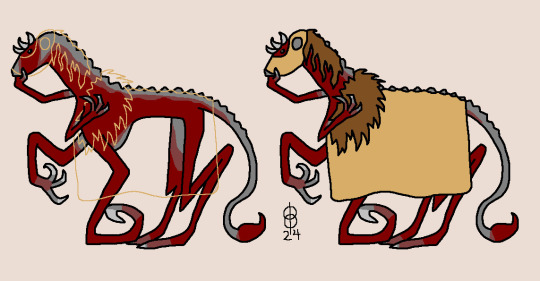
@pomrania has also decided to go the route of "let's get weird with it", and avoided the literal interpretation by re-analyzing the word "has". This is similar to that style of joke one hears now and then -- you know, "he has the heart of a poet... he keeps it in a jar at home." (Incidentally, props to Mary Shelley for being perhaps the only person who could make that claim and not be kidding.) So this creature has the face of a man and the body of a lion, not in the sense that it was born with them, but in the sense that it keeps them as possessions. Very clever, and the underlying creature design is also fantastically creepy in my opinion.

@coolest-capybara (link to post here) mentions that she didn't recognize the description, and has given us this really cool-looking, rather menacing creature in their excellent medieval style. (This is why I insist on not naming the beasts even when it seems clear what it is -- this amazing piece of art might have looked entirely different if someone posted a spoiler.) I'm really struck by how it simultaneously looks like a patchwork sort of creature (different front & back legs, etc.) but all flows together into a cohesive whole. Just really well done, I think. (Also, thank you for including alt text.)

@cheapsweets (link to post here) has drawn the creature mid-leap, showing off its jumping prowess by shooting straight up into the air. I think this drawing does a very good job at combining human and lion anatomy to make something unsettling -- and the inclusion of the skull diagram up in the top left points to the amount of thought that went into this. As always, please check out the linked post for a detailed discussion of the design. (Also, thank you for including alt text.)

@strixcattus (link to post here) has drawn one that's oddly cute, and looks a bit worried. However, according to the description they've written in the linked post, this reaction on my part is probably going to get me killed, because apparently they're still quite vicious. I like it, though -- and, as always, I urge you to go read the linked post for this one.
On to the Aberdeen Bestiary... oh, we can't, actually. This is another missing page. So here's the illustration from the Ashmole Bestiary instead:

So, first of all, this is indeed the manticore, and I'm sure most if not all of the people who said they had guessed it got that correct.
Second, we can also note that all the artists who said something along the lines of "well we know about the issues of drawing medieval scorpions, so the scorpion-tail description doesn't need to be literal" were also correct there. Apparently this time a scorpion tail is just spiky all over, which I have to admit does look kinda cool.
Now let's address the elephant in the room. WHAT is that thing on its HEAD? My best guess is that it's meant to be a crown -- medieval art often sticks hats on nonhuman creatures with human faces, almost as if the artist wants to make sure you know it looks like a human head on purpose. I don't see crowns that often, though; usually it's just a cloth hat. (The one in Bodley MS 764, where I got the text for this entry, is clearly wearing a Phrygian cap.) I find myself unable to see it as anything but a daring hairstyle that is absolutely not working for it, though.
Anyway. The manticore is an odd one in its continuity here -- a lot of the mythical creatures in the bestiary have been changed, reinterpreted, or forgotten in the intervening centuries. I think maybe the manticore happens to have hit that sweet spot where it's popular enough that people remember it, but not so popular that it gets excessively telephoned through widespread transmission. I think a couple people noted that the Standard Fantasy manticore is more or less spot on to this description, and indeed, I can only think of one change:

(Art from the Magic: the Gathering card "Crimson Manticore", artist Daniel Gelon)
At some point, those bastards got wings. It's not universal at this time, but if you do an image search for "manticore", the majority of the modern ones are winged. I'm not really sure where that came from.
(Side note: I tested this by doing a Google image search, and one of the top results was a particularly odd-looking image, so I clicked on it out of curiosity. It was at the top of an... article? on a webpage I'd never heard of, and the opening of said article included the sentence, "In medieval bestiaries and art, the manticore was depicted with unique features such as paws, teeth, and fur." You don't say there, bud.)
Interestingly, the D&D manticore is slightly different from the description in an additional way.

Instead of a scorpion tail, it has a tail covered in spines. This has apparently been part of the D&D manticore since the beginning -- the above image is from 2e, but the 1e version had the same tail. (I just didn't use it because it's not as clear in the picture.)
Now, scroll back up to that Ashmole Bestiary image. The one where the tail doesn't really look anything like a scorpion's. Looks... similar to this in broad concept.
I doubt that Gygax or Arneson or whoever designed that aspect of their manticore after one bestiary image, so I popped over to bestiary.ca to see what else was out there. Out of the 38 medieval manticore images collected on that website, there are only two with a tail covered in spikes: the Ashmole manticore and one other that's clearly just a less-skilled artist working from the same image (it also has the same hat). Looking at the text sources, though:
"...it has a tail like a land scorpion, in which there is a sting; it darts forth the spines with which it is covered instead of hair..." -- Aristotle, De animalibus
"To the end of its tail is attached the sting of a scorpion, and this might be over a cubit in length; and the tail has stings at intervals on either side." -- Aelianus, On the Characteristics of Animals
Okay, that's the D&D version, mystery solved. New question: is it a coincidence that the Ashmole illustration fits Aelianus's description? Remember, the page is missing from the Aberdeen bestiary and the Ashmole bestiary isn't translated. The text comes from Bodley MS 764, which does not have a spiky-tailed manticore. My Latin is terrible and I'm untrained in palaeography, so I can't tell whether the entry there preserves the spiky description.
If any palaeographers out there want to solve this one for me, it's Bodleian MS Ashmole 1511, f.22v-23r, available digitally here. (I'll put some screenshots below, but I expect it's easier to zoom properly on the library's digitized manuscript.)


Okay, that's all I've got. Enjoy your week everyone.
30 notes
·
View notes
Note
hii i saw your amazing post on the ram mandir thing and i had to know your thoughts on this. i post about hinduphobia a lot, genuinely to spread awareness, and its a serious thing. i just saw a post by this person called tiredguyswag talking about how hinduphobia isn't real. its a real longass rant. i wanted to know what your thoughts were on it, and if you could debunk anything they were saying as false. ty!
Thank you so much for the appreciation <3 Every supporter counts. We will fight against this Hinduphobia, and we will emerge victorious!
I did go through the blog of this guy and honestly, this hellsite is exhausting. So are the hinduphobes and leftists. I might just exit someday because they do not deserve my energy.
To all the ones saying Hinduphobia does not exist— what was the Godhara train arson? What happened to the Kashmiri Hindus? What happened to the Brahmins of Pune post MK Gandhi's assassination? What happened to the Sikhs of Punjab after Indira Gandhi's killing? What was the emergency prior to that incident? What was that which happened to the 9 and 7 year old boys of Guru Gobind Singh ji? What happened to Chhatrapati Sambhaji Maharaj? What was the destroying of temples and deracination of our Gurukulas? What was all that money and artifacts stolen from our country, has it not robbed the golden sparrow? What was the voluntary faulty translation of the Vedas and Puranas so that Hindus themselves believe that their culture is maligned? THERE'S NO HINDUPHOBIA? LOOK AT PAKISTANI HINDU GIRLS BEING FORCIBLY CONVERTED AND RAPED! The Mughal India holocaust! The ncert has the fucking guts to teach little minds that Aurangzeb protected and built new temples! And what's their source? They have none. No files. Nothing at all to support their claim, and yet they have been teaching it for god knows how much time. But we do have Babur himself writing in his book that he hated Hindus, called us pigs and what not. We have evidences that they raped our women, murdered our men, the children weren't foreign to their brutality. The invaders looted the Somanatha multiple times, broke the floating Shivalinga. They took away Ayodhya, Mathura, Kashi and so many other temples. Some shitheads have their asses in fire when they're seeing us celebrate the Rama temple. Y'all wouldn't be having a meltdown had the other side won the case. Y'all should rot in hell. You have no concept of country and social harmony, no global brotherhood, all your liberalism reduces to ashes when you see Hindus being happy for once. We have been killed for being idol-worshippers, and our fault is that we don't cease to exist.
They say we blame invasions for everything bad that has happened to us, but remember that we were the golden sparrow without them.
32 notes
·
View notes
Text
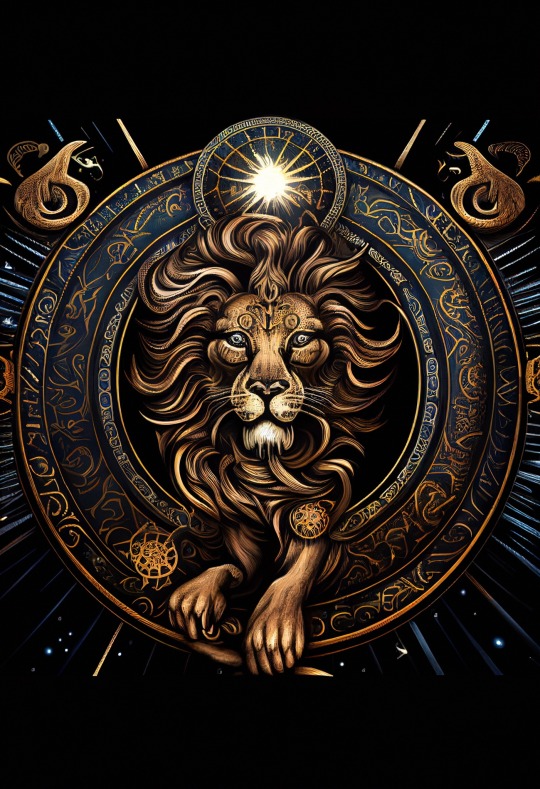
I greet thee, thou that fillest the whole structure of the air, spirit that stretchest from heaven to earth... and to the confines of the abyss... spirit that also penetratest myself and leavest me again. Thou, the servant of the rays of the sun, that enlightenest the world... a great circular mysterious form of the universe, heavenly spirit, ethereal spirit, earthy, fiery, windy, light... dark spirit, that shinest like a star... Lord, god of the Aions... Ruler of everything.
'Zurvan Akarana' Talon Abraxas

ON ZURVAN AND SORCERY from my forthcoming book on the Black Mass.
Magic and Sorcery are two different knowledge traditions, where Sorcery by definition implies black magic, or perhaps even more red magic. It is the magic of fire, eroticism and blood, directly linked to what India is referred to as tantra and kundalini yoga. The word has etymological connections to "blood" and the color red, but is derived from the Latin sors, "fate", and is the knowledge to free oneself from the web of Fate and learn to rule over the cosmic web.
The goal of the LHP has its roots in the Persian Zurvan religion in part. Zurvan is a First Principle, the primordial creator deity who put the principles of good and evil, the twins, and Angra Mainyu and Ahura Mazda, also known as Ormudz and Ahriman (who has little to do with Rudolf Steiner's concept of Ahriman). By putting these principles in place, Mankind could choose to do good or harm. This is the manifestation of Karma, or Cosmic Law. Ordinary people are either connecting to good or evil. This is not pretending to be good, but doing good in actions. Zurvan is beyond time and space, beyond good and evil. Zurvan is the "one", the "alone, the Singularity with all multifold inside. The name Zurvan derives from the Middle Persian name derives from Avestan zruvan-, "time". Zurvan is Time but also because of that not under the control of Time. Zurvan is like Kali, or the gnostic Aeon and Abraxas, it is Sorath, also spelt Zurath, The Deity whose number is 666. When reaching the aura of Zurvan you become a True Sorcerer that is not trapped by the Web of Fate, but becomes The Spider. This is in the Draconian Tradition known as the mysterious NOXXON: Zurvan is The Ultimate Twin, but with the dualism united, and thus a form of both Thaumiel and Thagirion.
While white Magicians work with the circles of nature, the Sorcerer goes beyond black and white, into the Royal Color of Atlantis, the color Red that transcend beyond the dualism of our common world. The Sorcerer is on a a journey to the Existence free from the influence of The Zodiac, The Zodiac keep us in chains, but can be used by The Sorcerer. Red is also synonym to Gold,and this is an Golden Alchemical Art. Both the name Zurvan and Sorcery derive from words with connotations “time”, “fate” and “red” although perhaps from different etymological sources. To emphasize the connection Dragon Rouge sometime spell it Zorcery.
In the mysteries of Hellas Zurvan is associated with Saturn and Pluto, and to some extent Chronos , He lives in primordial Chaos, in Bythos ("depth or profundity", Greek βυθός), Proarkhe ("before the beginning", Greek προαρχή), the Arkhe ("the beginning", Greek ἀρχή), "Sophia" (wisdom). Another name for him is Zoe, which means “life” itself. Zurvan is the pure “Existence”, “Vital Force”, what is known as Kundalini by the Indians and the same as Vril and Odic Force. Zurvan is however not an abstract principle, but one of the most advanced, powerful Intelligences in Existence, far beyond anything we humans normally can grasp. A famous picture of Zuravn/Aeon/Abaxas is Leontocephaline, The Winged Lion-Serpent Son, the being that rules Thagirion, The Black Sun.
When I was in my twenties I woke up one night and as a physical manifestation Zurvan, or Abraxas as I knew the name, was rising above me. The wings were raised and the serpent around him was black and red and coiling around him looking at me. The serpent wound around the body seven turns and was radiating with the colors of the seven planets and chakras. The lower one was connected to wrought iron, which shows Zurvan's role as a figure who gives man knowledge and tools, like the Fallen Angels. At his feet I saw a rod of Caduceus shining with the light of the kundalini. He carried a staff and two keys, behind him he had a stone tablet that I could not read. The face was surrounded by a blinding strong light and I heard a weird sound as it came from the depth of the Universe and beyond. Zurvan spoke straight into my consciousness:
“You've seen me before, I have chosen you, but you do not remember our first meeting. You have entered my hall in the Black Sun with its 12 rays and 1001 gates. Take my staff, my keys and the stone tablet. In time, you will know how to use it.”
“The Fire that I am, burns all the debts and mistakes of Mankind, all guilt and all the burdens of Time. I am Fire! I only serve The Red Dragon, no one else. I am the key bearer and The Angel and Beast in one, and my number is 666. My appearance you know from ancient statues and drawings, but I am the Primal Picture, The Winged Lion-Serpent Son. That is the riddle to know me.”
“People must gather to fulfill the Prophecies, otherwise Mankind will end itself without my help. Then they are devoured by Angra Mainyu and lost in a Hell that is forever pain. Do good! Do to others whatever you would like them to do to you! Never forget The Golden Rule.
“Free yourself from both good and evil, from my angels Angra Mainyu and Ahura Mazda. Be free. Do good. Be a warrior. And I will show you how to use these keys and open the Door of Knowledge and the Door of Life. Go forward into The NIght and gather the lost and scattered people and help them find their True Self. Direct the path to the Black Sun and The Daemon with this staff. And follow the Sacred Law. It is The Law written by Lucifer.”
I was surrounded by a cloud of light in all colors and Zurvans words were absorbed right into my heart. I proclaimed: This is a Path with a Heart”
Zurvan was gone and the rest of the night I was in a state of half-sleep and lucid dreams about the objects Survan had handled over to me.
25 notes
·
View notes
Photo


ISSUE 69 BLOCKS MAGAZINE PAGE 35 + 36
[ID 1: Two magazine pages. The first shows several pieces of digitally painted concept art of; MK, a roughed-up couch, a game controller, a polaroid of an early design of Mei, and another polaroid of Monkey King from the film “Havoc in Heaven”. Below it is an image of a LEGO designer referencing a piece of concept art, one of MK flying on a hoverboard, to design MK’s minifigure, which is being drawn on his tablet. ]
[ID 2: On the left, between the text, minifigures of MK, Mei, Sandy, Pigsy, and Monkey King descend vertically. On the right is an ink sketch of Monkey King, who wears a crescent fillet and has a large forehead. He sits atop his cloud, below him is an early version of MK, who has a skateboard, spiky black hair, and a shirt with a star on it. Next to this image is a digital painting of Monkey King, who closely resembles his minifigure but has a full cape and golden sleeves. Under this is a picture of Monkey King’s minifigure, who stands on a LEGO cloud and wields his staff.]
Transcript:
The Characters
MK Monkie Kid, the theme's titular character, Is chosen by the Monkey King to be his successor and defend against the Demon Bull. He's a brand new character in the story.
ΜΕΙ Mei is part of the Dragon Family, a descendant of the legendary White Dragon Horse, which the monk Tang Sanzang rode down the Silk Road on his epic pilgrimage to India and Central Asia.
SANDY Once a soldier, Sandy is now a relaxed, tea drinking nature lover. He's based on the character of Sha Wujing. the most kind-hearted, loyal and logical of Tang Sanzang's three disciples.
PIGSY Head Chef of Pigsy's Noodle Shop, the character takes a great deal of pride in his kitchen. He's based on Zhu Bajie, a part-human, part-pig monster who embodies the sins of sloth, gluttony and lust in the original story.
MONKEY KING After vanishing centuries earlier on a magical cloud, Monkey King is back to train the Monkie Kid. He's based on Sun Wukong, who like Sha Wujing and Zhu Bajie was forced to accompany Tang Sanzang on his quest by the goddess of mercy.
Developing Monkie Kid
It wasn't just name recognition that the Monkey King story enjoyed: it was also ripe for a LEGO adaptation. 'I knew something about the Monkey King and Journey to the West because key beats from that story have been reinterpreted in Hollywood so many times,' Simon says. 'When we were discussing retelling it, we were just listing out the big, iconic aspects.'
The biggest of all is of course the Monkey King himself. 'The Monkey King is such an amazing superhero because he can transform himself into so many different things. He can fly on a magic cloud, he's slightly cheeky, he slightly breaks the rules and he's not perfect. He's got that likable character; he's not the typical square-jawed hero that's just going to save the day.
'The team in China started saying, 'There's the Bull Demon and he has a wife that has this huge fan that creates tornadoes, and a son who can control fire, then all the other demons like the Spider Queen...' You just think wow, these demons are awesome and we can bring them to life in brand new ways.'
That early meeting set so much direction for the theme - not just for the villains, but also for the title. As with all great moments of invention, though, no one person can claim the credit. 'I wish I could remember who it was, but somebody said, 'It's the next generation of the Monkey King and he's just a boy,' and somebody said, 'The Monkie Kid.' That was the spark moment.'
Testing proved that children could identify with the Monkie Kid, or MK as he is also known, seeing the possibility that they could be the Chosen One.
Returning to Billund in September 2018, it was time to present the concept. 'We had a 'portfolio gate' as we call it at LEGO, which is where the senior team meets and we have to pitch what we have been working on, and get their approval to move forward. Everyone was like, 'Wow!' and the China team supported it 1000% - they gave us the green light to move forward and we went into the full development phase of sculpting new characters and building models.'
"HOW CAN WE MAKE SURE WE AREN'T JUST SPRINKLING A LITTLE BIT OF CULTURAL DUST ON TOP?"
#LEGO Monkie Kid#lmk mk#qi xiaotian#mei monkie kid#long xiaojiao#sandy monkie kid#sha dali#pigsy monkie kid#zhu da chu#monkey king#concept art#blocks magazine#mmb.png
76 notes
·
View notes
Text
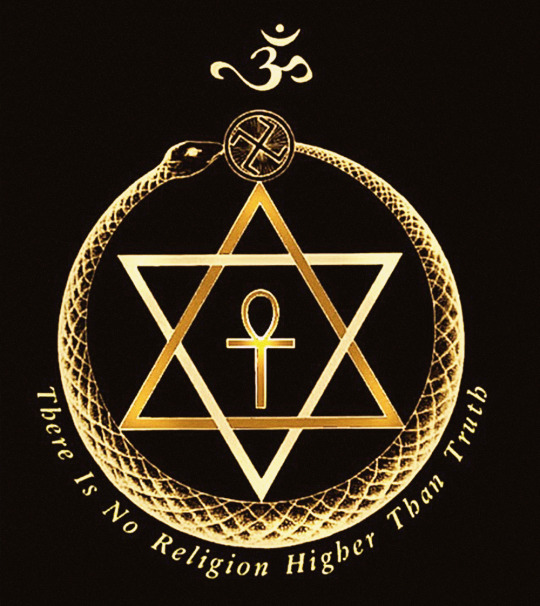
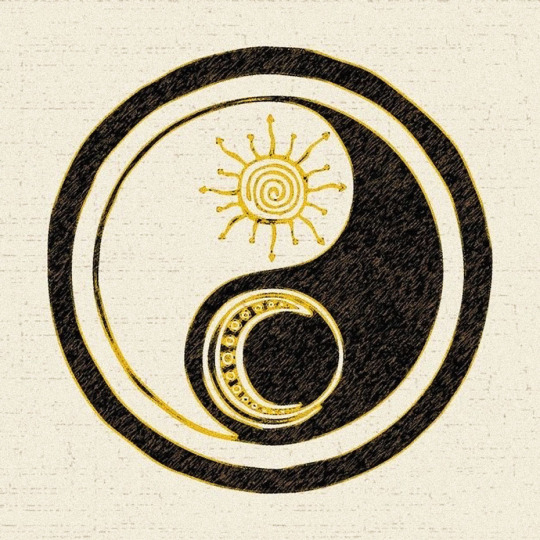
"All religious forms are manifestations of the great cosmic, universal, infinite religion latent in every atom of the cosmos." --Samael Aun Weor - The Perfect Matrimony
Any genuine religion, mystical tradition, or type of spirituality is an attempt to communicate something of value and importance, which is that there is a purpose to life that one can experience for oneself.
The main traditions that we study here are Hinduism, Judaism, and the reform of those religions which came later, which are Buddhism and Christianity. We study all religions, but these are the four main ones we are interested in.
There are people all over the world that study the religion that they grew up with, or the religion that they became attracted to during their life. All of those traditions are very beautiful and have a great deal of knowledge that they express to humanity.
But unfortunately, people do not see religions for what they truly are. Over many centuries, religions have become a mere belief, something that people follow, respect, study and believe in, but rarely experience. It is very rare, sadly, to find anyone who has true experience of what the religions are teaching. Yet, that is their purpose: to guide us to experience what they teach.
In this tradition, the experience of religion is our primary goal. Our primary interest is learning the practical value of each religion.
Now in the case of Buddhism, Hinduism, Judaism and Christianity, all of them in their essence teach exactly the same thing. On the surface they can appear different, but in their heart they are exactly the same.
They are attempting to convey the experience of a higher way of living, something that cannot be communicated in words. Each religion is like the expression of direct mystical experience with the divine.
Jesus was a vessel for that spirit which came in order to teach the same thing, the same religion, the same truth in different places. As an example: in India we find the Lord Krishna, who taught the same truth, in different levels of course, according to its own vessel. The vessel of Krishna who is one with that Spirit and is that same Spirit itself is the Bodhisattva; the Bodhisattva of Krishna is of course Arjuna, who we find in the Bhagadvad Gita.
Arjuna is the one who is talking to the Lord Krishna in the Bhagavad Gita, but you have to understand that Arjuna is the bodhisattva of Krishna. So, Krishna is the master of Arjuna. Krishna is the master and Arjuna is the Bodhisattva, who is learning from him and is at the same time teaching to others through the same.
The thing is that when we talk about this spiritual prophecy, or this intelligence that is able to incarnate in many places in order to establish the religion or the way to union with God of that time and place, this concept is understood in the western world, through the Bible, but in a very incomplete way.
Indeed, in the West there is a lot of ignorance related with this spirit, because in many different places this spirit has received many names. Among the Tibetans, for instance, Christ is known as Avalokiteshvara; you find that name in the Buddhist Pantheon.
Among the Taoists you find Kwan Yin. Kwan Yin is of course, according to the Tao, the “subtle voice,” or the “sweet voice,” in other words, the verb, the word, Logos.
Among the Mayans, they call this spirit, Kukulkan. The word “Kukul” means bird and “Kan” means serpent. So, when you say Kukulkan, this means the “bird-serpent.” That spirit, the “bird-serpent” in Aztec language or Nahua, is Quetzalcoatl.
There among the Peruvians, the Incas of Peru they call him Viracocha. Viracocha is the same Vishnu, the Lord. Of course, Chokmah חכמה, in the Kabbalah as you know means “Wisdom” and this is related with this spirit of wisdom.
All religions are precious stones strung on the golden thread of Divinity.
All religions conserve the eternal values. False religions do not exist.
All religions are necessary; all religions fulfill their mission in life.
It is absurd to state that our neighbor’s religion is useless and that only ours is authentic. If the neighbor’s religion is not good then my religion is not good either because the values are always the same.
It is stupid to state that the religion of the indigenous tribes of America is idolatry because they too have the right to say that our religion is idolatry. If we laugh at them, they can also laugh at us. If we say that they adore or that they adored idols, then they too can say that we adore idols.
We cannot discredit the religion of others without discrediting ours as well because the principles are always the same. All religions have the same principles.
Under the sun, every religion is born, grows, develops, multiplies into many sects, and dies. This is how it has always been and will always be.
Religious principles never die. The religious forms can die, but the religious principles, in other words, the eternal values, can never die. They continue; they are re-dressed with new forms.
Religion is inherent to life in the same manner that humidity is to water.
It is worthwhile to study all religions. The comparative study of religions leads one to comprehend that all religions conserve the eternal values, that no religion is false, that all are true.
The word religion comes from the Latin word religare, which implies “to link or bind or union of the Soul to God."
"As the blazing fire reduces wood to ashes; similarly, the fire of Self-knowledge reduces all bonds of karma to ashes..." --Krishna - Bhagavad-gita 4:36-37
The eternal values embodied in the world's religions express the essential requirements for the consciousness to enter into the light and fully realize the purpose of living.
In other words, the heart message of every religion seeks to awaken the consciousness and eliminate suffering, so that the eternal light may be known through our own direct experience.
"Truth is one; sages call it by various names." -- Rig Veda
Original Post by Mac Fion
13 notes
·
View notes
Text
Differences in comic!Pav's suit design
So, just because I want to I decided to make this.
The first thing is that, in the 2004 Vol., the mask has what I can pressume is a tilaka (or tika) of some sort?? A fancy forehead mark. It can be seen in every issue with the only exception being the second one as far I remember.
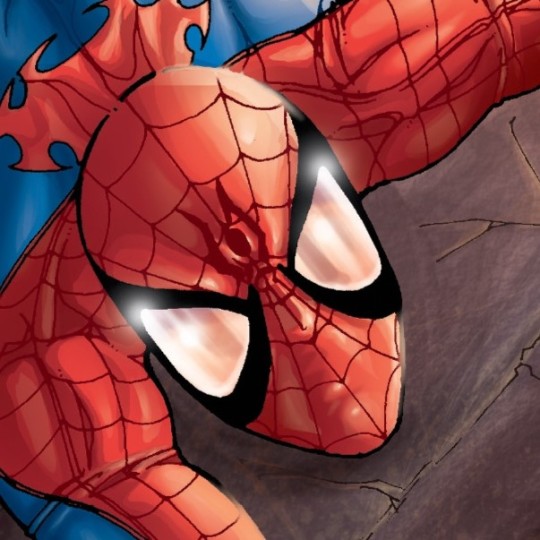


This mark is obliterated in his following appearances. Like. It wasn't even there at all, it was just a collective hallucination boss, Mandela effect, etc. etc. Not real. It's not there in the Spider-Verse design for him (neither of the two Spider-Versessssss), nor in Web Warriors, nor in the 2023 Vol.
(Worth mentioning tho: in Spider-Verse Vol. 2 (the Secret Wars event), the artist covers Pav's hands. Bare hands no more, he said.)
However. David Baldeón in Web Warriors DID a mask change.

In the eyes. They aren't, in this series, the average triangular-slash-pointed visors, but rather circular-slash-oval and has those rather cute TBH ornaments around the eyes.
David Baldeón did other change, that is:

The suit clothe is above the dhoti sash, not behind it. Did other artist do this? No. Just him. Thank you for all your sevices. I actually like it, LOL.
Then, we have Spider-Man: India Vol. 2. There are no changes on the OG design. The mask is the average, the clothe is behind the sash, bare hands, his shoes are mojari khussa. BUT THEN we have the re-design.


And who the hell knows what was the inspiration for it (like, okay, yeah, probably the movie but TBH I'm a tiny bit skeptical of that? --like yeah we have his now lose hair and the use of golden but the concepts are really day and night, so perhaps there's something more), and I need answers. I don't think I will get them, but I need them.
Oh, but the forehead mark is back! Kinda.
34 notes
·
View notes
Text
Science is a rigorous, systematic endeavor that builds and organizes knowledge in the form of testable explanations and predictions about the world.[1][2] Modern science is typically divided into three major branches:[3] the natural sciences (e.g., physics, chemistry, and biology), which study the physical world; the social sciences (e.g., economics, psychology, and sociology), which study individuals and societies;[4][5] and the formal sciences (e.g., logic, mathematics, and theoretical computer science), which study formal systems, governed by axioms and rules.[6][7] There is disagreement whether the formal sciences are science disciplines,[8][9][10] because they do not rely on empirical evidence.[11][9] Applied sciences are disciplines that use scientific knowledge for practical purposes, such as in engineering and medicine.[12][13][14]
The history of science spans the majority of the historical record, with the earliest written records of identifiable predecessors to modern science dating to Bronze Age Egypt and Mesopotamia from around 3000 to 1200 BCE. Their contributions to mathematics, astronomy, and medicine entered and shaped the Greek natural philosophy of classical antiquity, whereby formal attempts were made to provide explanations of events in the physical world based on natural causes, while further advancements, including the introduction of the Hindu–Arabic numeral system, were made during the Golden Age of India.[15]: 12 [16][17][18] Scientific research deteriorated in these regions after the fall of the Western Roman Empire during the early middle ages (400 to 1000 CE), but in the Medieval renaissances (Carolingian Renaissance, Ottonian Renaissance and the Renaissance of the 12th century) scholarship flourished again. Some Greek manuscripts lost in Western Europe were preserved and expanded upon in the Middle East during the Islamic Golden Age[19] and later by the efforts of Byzantine Greek scholars who brought Greek manuscripts from the dying Byzantine Empire to Western Europe in the Renaissance.
The recovery and assimilation of Greek works and Islamic inquiries into Western Europe from the 10th to 13th century revived "natural philosophy",[20][21][22] which was later transformed by the Scientific Revolution that began in the 16th century[23] as new ideas and discoveries departed from previous Greek conceptions and traditions.[24][25] The scientific method soon played a greater role in knowledge creation and it was not until the 19th century that many of the institutional and professional features of science began to take shape,[26][27] along with the changing of "natural philosophy" to "natural science".[28]
New knowledge in science is advanced by research from scientists who are motivated by curiosity about the world and a desire to solve problems.[29][30] Contemporary scientific research is highly collaborative and is usually done by teams in academic and research institutions,[31] government agencies, and companies.[32][33] The practical impact of their work has led to the emergence of science policies that seek to influence the scientific enterprise by prioritizing the ethical and moral development of commercial products, armaments, health care, public infrastructure, and environmental protection.
12 notes
·
View notes
Text

iPhone Case / Wallet Edition
This beautiful leather case is expertly crafted from carefully selected crocodile-embossed calfskin, making it a stunning statement piece to carry with you.
0 notes
Text
Part 3: Leudheros, Aspect or Son?

From Proto-Indo-European *h₁leudʰero ('belonging to the people', hence 'free'). God of viticulture, alcohol, fertility, and freedom. He also typically has a female counterpart, Leudhera, who is essentially, perhaps even literally, his twin in all aspects. The Senowera Document lists him as both an epithet of Rudlos and an entirely separate god with a separate lineage.
His cognates include the Roman deities Liber & Libera, The Norse Lóðurr, and the Greek words ’Ελεύθερος & Έλευθέρα, referring to the concept of freedom and island respectively. She may also cognate with Greek Dionysus, who resembles Liber and was later syncretised with him into his Roman characterization as Bacchus, and Gallo-Roman Sucellus. I'm unable to find any Indo-Iranian cognate, so he/they may not have existed in earlier PIE stages.
The main argument here is whether or not Leudheros and his domains are aspects of Rudlos, or separate deity. Keep in mind that in IE thought, the existence of a concept implies a deity of said concept, creating many gods that are deified abstractions. Xaryomen is an example of such deities formed from abstractions, albeit Xaryomen is likely much older, as he much better attested.
Let's take a look at these cognates.
Lóðurr:
Not much is known about Lóðurr. His name occurs only once, attested to in the Poetic Edda. He is mention alongside Hoenir and Odin in the creation of mankind. It's says the while Odin gave the first man and woman breath, and Hoenir gave sense/spirit, it was Lóðurr who gave flesh and blood.
"Lóðurr's friend" is used as a kenning for Odin.
It is possible that his name appears on one of the Nordendorf fibulae as Logaþore, along side Wodan and Wigiþonar(Thor). I personally find it interesting that he is the first of the three but that may not indicate much.
Many scholars considered Lóðurr to another name for Loki.
Liber Pater:
He was a patron deity of Rome's plebeians and was part of their Aventine Triad. His festival of Liberalia (March 17) became associated with free speech and the rights attached to coming of age. Before his official adoption as a Roman deity, Liber was companion to two different goddesses in two separate, archaic fertility cults; Ceres, an agricultural and fertility goddess of Rome's Hellenized neighbors, and Libera, his female equivalent(and sister in several sources).
Leudheros is primarily reconstructed from Liber. Latin Liber means "free", or "free one"; when coupled with "Pater", it means "The Free Father", who personifies freedom and champions its attendant rights, as opposed to dependent servitude. His patronage of Rome's underclass associated with plebian civil disobediance against the patricians, and his worship seems to have been associated with republicanism/the famous roman anti-monarchism of the republican era.
Liber also personified male fertility, which was "ejaculated as the "soft seed" of human and animal semen". His temples held the image of a phallus. The rites ensured the growth of seeds and repelled any malicious enchantment (fascinatus) from fields.
I could into detail about his syncretism with Dionysus but i'm just gonna copy-paste the wikipedia section on it because I feel it is more than sufficient.
"Liber's associations with wine, inebriation, uninhibited freedom and the subversion of the powerful made him a close equivalent to the Greek god Dionysus, who was Romanised as Bacchus. In Graeco-Roman culture, Dionysus was euhemerised as a historical figure, a heroic saviour, world-traveller and founder of cities; and conqueror of India, whence he had returned in the first ever triumph, drawn in a golden chariot by tigers, accompanied by a retinue of drunken satyrs and maenads. In some cults, and probably in the popular imagination, Liber was gradually assimilated to Bacchus and came to share his Romanised "Dionysian" iconography and myths. Pliny calls him "the first to establish the practice of buying and selling; he also invented the diadem, the emblem of royalty, and the triumphal procession." Roman mosaics and sarcophagi attest to various representations of this exotic triumphal procession. In Roman and Greek literary sources from the late Republic and Imperial era, several notable triumphs feature similar, distinctively "Bacchic" processional elements, recalling the supposedly historic "Triumph of Liber"."
Other Alcohol Gods
Dionysus presents a strong cause due to his fundamental connections to viticulture, wine, rebellion, individualism, and even frenzied violence. There is some solid linguistic evidence connecting them given that one of his most popular epithets is Dionysus Eleutherius, "The Liberator", derived from Ελεύθερος, shown above to be cognate with Liber. Eleutherius is also the aspect Dionysus specifically associated with rebellion against authority and freedom of personal expression, lining up closely with Liber's character as patron of the plebians.
Rugatis is a Lithuanian god of beer. He has a tentative etymological link to Rugiaevit, and thus Rudlos. We know he had very strong fertility ties, evidenced by etymology potentially relating his name to the "heat" of animals, and some rituals related to marriage, but not much else is known of him. We do known he had a wife whose name was the feminine form of his.
Earlier I said their were no Indo-Iranian cognates. But there just might be one. This is a BIG stretch though. The Vedic god Varuna, who we will talk about a lot more in the next part of the series, has a daughter named Varuni(Note: his wife, and the personification of his shakti are both also called Varuni, and the three are sometimes said to be one goddess) is a goddess of wine. I want to make note of this because we have shown a pattern of Leudheros' cognates having sister-wives who bear a feminine form of their name, and act as a female equivalent with all the same domains and characteristics.
Obviously, Varuna himself is not particularly associated with Alcohol in any surviving work, but in the next part of the series, I intend to show a potential link between him and Rudlos through yet another reconstructed PIE deity, Worunos. But let's not get ahead of ourselves.
I feel this could either way. I think that what we have proven most concretely is the preponderance of alcohol deities in IE cultures(we haven't covered them because those had little to nothing indicating them as potential cognates. Vedic Soma, for example), and perhaps some common-ish formats for their characterization.
That said I personally believe that Leudheros should probably be reconstructed separately, most likely as Rudlos' son, alongside his sister-wife, Leudhera. Perhaps one could even use that as an epithet of his, Rudlosunu. I believe they are related for the following reasons:
Rudlos has very clear connections to alcohol, they madness that it brings, and it's origin. But none of his descendants are considered gods of alcohol, the closest is Odin, who is known to prefer foreign wines over mead.
Rudlos' cognates often work closely with sources of alcohol or gods of alcohol, cognate with Leudheros or not.
Dionysus is an excellent example of the overlap between the domains of frenzied violence and war, and that of alcohol and civil disobedience.
Rudlos is connected to alcohol because it enables(especially if laced with something fun) the induction of madness and frenzy in a person. He is associated with it, but not patron of it. But it would make sense for the patron of alcohol to be associated closely with Rudlos.
I'm going to create a separate post for information on the worship of Leudheros and Leudhera at a later date, at which point I'll just link this post to it for simplicity so stayed tuned for that.
#proto indo european gods#proto indo european religion#proto indo european#proto indo european pantheon#proto indo european paganism#deity devotion#deity worship#pagan#paganism#proto indo eauropean religion#deity#pantheon#pie paganism#pie pantheon#pie polytheism#pie reconstructionism#pie religion#pagan revivalism#pagan reconstructionism#indo european religion#indo european#roman religion#roman paganism#Liber pater#Lodurr#dionysus#hellenism
2 notes
·
View notes
Text
being indian-american and also very Gender is hilarious, a vignette
i think the easiest term for what my gender is, or sometimes isn't, is genderfluid. i don't think i've ever truly been able to understand the concept of gender, or how it's ever applied to me. but i'm not completely agender, either.
some people might argue that calling gender a performance can be a bullet in favor of bigots, who wish to treat trans people as just "disillusioned kids playing dress-up", as a teacher i once met in high school so succinctly put it. but gender is something i feel more tangibly in terms of performance, and i can't really put it in other words that make sense.
i find myself at odds with who i was, ten years ago. when gender felt like something out of my hands, an understanding waiting to be reached within my brain, hoping that one day it might solidify into something on a binary side, or at the very least, leave me with nothing at all to worry about.
(and when that didn't end up happening, a firm resolve to at least learn to deal with the constant dysphoria, await the supposedly masculine or feminine shifts in perspective the same way i anticipated and dealt with blood work results.)
i find myself at odds with that because gender to me now, and the way i feel it, is wholly performance. perspective, perception, their resulting behaviors and viewpoints, are all so fluid. and the way my gender shifts, flows into another, is still not something i am entirely in control of like the way i once wished, but something i can wield in the environment or situation in which i find myself, regardless of how it shows itself at that time.
anyway.
the way i dress most days is androgynous, so that if gender taps me on the shoulder and asks to be my skin for a few hours, i can work with it. but today was more masculine, and i was going downtown, so i decided to wear something to reflect that - an open floral shirt over a t-shirt with a golden chain, jeans, sneakers, and of course, a backwards baseball cap. which is about as southern california dude/butch of an outfit you can get without wearing swim shorts and a tank top.
and on the way back, i had to stop by an indian cultural event because a family friend was participating.
indian culture is very strict to the gender binary. this opposes some parts of vedic philosophy, in which the body is a mere shell for the soul, and so the soul is inherently without the idea or limitation of gender. it also renders gods as genderless, though we have the separation between gods and goddesses in mythology. many hindus haven't followed the true meaning of the scripture for a long time. but that's besides the point.
indian men tend to gather, standing or sitting, in groups while their wives shop, and not to talk- to steadfastly stare in opposite directions, and if they do talk, it's about politics. or the latest moon mission. indian women hover, stall to stall, either staring fearfully at their husbands or cheerfully talking with store owners, or silently comparing prices while taking stock of the different languages within nine square feet of them.
my experience of the indian american performance of gender, outside of what bollywood puts on screen, is, in a word, careful. everyone wants someone else to know, to notice, that the way they are dressed or the volume of their voice is deliberate. that the gold earrings they're wearing are 24K and they got them on their last trip to India over the summer. that they will fit in with the rest of their half of the crowd if they lower their voice, speak less, speak more, laugh louder, eat pani puri or samosas any more or less delicately than the man or woman next to them.
standards of being an indian man or woman are trained into us as young children, so that we grow up with a clear idea of what that looks like. how to dress (within american standards, but also indian standards, but also gender standards), how to talk, what topics to discuss, how to stand diminutively to avoid attracting attention, what to say to make others stay within their own gender boundaries, and let them recognize that we're doing the same.
great how that turned out, huh.
so when they're confronted with someone who doesn't fit any of those standards, who doesn't want to, who simply wants to exist in a culture that thrives on conformity and oneupmanship, they don't know what to do.
and standing with my father in this event market crowd was interesting. because i was deliberately performing masculinity in my clothing and stature, and people were thrown off. nearly every woman was in a chudidar or a dress or wearing makeup, staring at me and my long hair and my decidedly non-feminine presentation, trying to reconcile those. trying to figure out exactly why my mother let me leave the house dressed like this, because you can't escape your indian parents' clutches even as an adult. trying to know exactly what i was, failing, and turning back to the other women with one eye on the merchandise and one eye on me.
and it wasn't the fact that i wasn't in indian dress- there were plenty of people in western clothing- but rather that i stood by my father, equally silently, in a crowd of men looking like they'd rather be anywhere but there, holding on to gender not as a bargaining tool or a tenet, but as a rippling, nebulous key.
#gender#genderfluid#gender fluidity#gender performance#indian#indian american#lgbtqia#what i find funny#is probably not what other people find funny#but making people uncomfortable is one of my talents#and gender helps with that
7 notes
·
View notes
Text

A Journey Through Our Defenses: A Dive into the History of Immunology
The human body possesses an extraordinary ability to resist disease, a complex system known as the immune system. Our understanding of this intricate network, however, has evolved significantly over time, shaped by both ancient observations and groundbreaking scientific discoveries. From the ancient Greeks observing immunity after the plague to the cutting-edge research on immunotherapy, the history of immunology is a captivating saga of human curiosity, scientific breakthroughs, and the relentless pursuit of understanding our body's remarkable defense system.
The earliest observations of immunity date back to ancient civilizations. The Chinese practiced variolation, a process where dried smallpox scabs were blown into the nose to induce mild illness and subsequent immunity. Similar practices existed in India and Africa, demonstrating an intuitive understanding of acquired immunity. In 430 BC, Thucydides, a historian of the Athenian plague, noted that recovered individuals could safely care for the sick, suggesting an early recognition of disease resistance. The turning point in immunology arrived in 1796 with Edward Jenner, a British physician. Observing that milkmaids who had contracted cowpox were resistant to smallpox, he conducted a daring experiment, inoculating a young boy with cowpox pus. The boy developed a mild illness but remained protected from the deadly smallpox, marking the birth of vaccination. Jenner's work paved the way for further research into understanding immunity and developing vaccines against other diseases.
The 19th century saw significant progress in understanding the immune system's mechanisms. Louis Pasteur, a French microbiologist, developed vaccines against cholera and rabies, further solidifying the role of vaccination in disease prevention. In 1880, Ilya Mechnikov, a Russian biologist, discovered phagocytes, white blood cells that engulf and destroy pathogens, earning him a Nobel Prize in 1908. Emil von Behring and Shibasaburo Kitasato identified antibodies in the blood of vaccinated individuals, revealing the humoral immune response, where specific molecules target and neutralize pathogens.
The 20th Century: A Golden Age of Immunology: The 20th century witnessed a revolution in immunology. Karl Landsteiner discovered blood groups, leading to safer blood transfusions. Peter Medawar elucidated the concept of self-tolerance, explaining how the immune system distinguishes self from non-self. The discovery of T cells and B cells by Jean Dausset, Peter Doherty, and Rolf Zinkernagel unraveled the intricacies of the adaptive immune system, where lymphocytes tailor their response to specific pathogens. These breakthroughs paved the way for organ transplantation, autoimmune disease therapies, and the development of new vaccines.
21st Century: Expanding Horizons: The 21st century continues to push the boundaries of immunology. Monoclonal antibodies, engineered to target specific molecules, revolutionized cancer treatment and immune-based therapies. The Human Genome Project provided invaluable insights into the genetic underpinnings of the immune system, opening doors for personalized medicine. Research on immunotherapies harnessing the body's own immune cells to fight cancer and other diseases is rapidly evolving.
The history of immunology is a testament to human curiosity and ingenuity. From ancient observations to modern marvels, our understanding of this intricate system has transformed healthcare and continues to evolve. As we delve deeper into the mysteries of the immune system, we unlock the potential for even more effective treatments and preventive measures, paving the way for a healthier future for all. The history of immunology is a wild ride, filled with brilliant minds, bizarre experiments, and discoveries that continue to shape our world. And the best part? This story is still being written, with each new chapter promising even more amazing advancements in the fight to keep us healthy.
#science sculpt#life science#science#molecular biology#biotechnology#immunology#artists on tumblr#immunotherapy#scientific illustration#scifiart#curiosity#narrative#create#concepts#history of immunology#medical school#medical science
4 notes
·
View notes
Text

Exploring the word CHAKRAVARTIN and its symbolic associations:
The term chakravartin, usually translated as 'universal monarch or emperor', literally means 'wheel-turner' or 'a wheel that travels everywhere without obstruction'. The prefix 'chakra' or wheel is a familar term but has various interpretations. It can refer to the fiery wheel of the sun, or the sun god's chariot of two wheels (heaven and earth), which rides through the sky drawn by seven horses, representing the seven days of the week. As an emblem of Vishnu it is the discus, which appears as an auspicious sign on the palms and soles of divine beings. As a unit of land measure the chakra refers to the whole of a land's surface area, from coast to coast. This is implied in descriptions of the chakra touching the rim of the horizon, or the encircling perimeter of land seen as a disc from a central vantage point. The turning of the wheel symbolises both secular and religious authority; it denotes change, movement, extension, conquest, and the formation of a new ethical and moral order. The deliverance and transmission of the Buddhist teachings are known as 'turning the wheel of dharma'.
When Shakyamuni Buddha was born the great seer Asita interpreted the miraculous events and auspicious marks on the baby's body as divine indications that the child was destined to become either a chakravartin or an enlightened Buddha; temporal or spiritual sovereignty lay in the child's destiny. There was a choice, the pendulum could swing either way. It was for this reason that Shakyamuni's father, King Shuddhodana, endeavoured to keep his son away from the harsh realities of life, cocooning him in the opulence of sensual gratification and the illusion that youth, vitality, and beauty are eternal delights. Curiosity beckoned the young prince to venture beyond his golden cage, where he witnessed the god sent apparitions of old age, disease, and death. The realisation that suffering was man's lot tore asunder the illusory veil of eternalism and materialism. What could it profit a man to gain the whole world if in the end one's soul was lost in the deterioration of old age, disease, and death and decompostion? In the face of such blatant impermanence there was no longer any choice for the young prince. World domination was the ultimate illusion; only self-enquiry into the root cause of suffering and the nature of the mind, the eternal quest, could lead to the ultimate understanding of reality.
The concept of the chakravartin probably arose from the Vaishnavite ideal of the mahapurusha or 'great man', which in turn had its origins in the Vedic and Puranic epics of ancient India. Such a being is destined to become a world leader and, like the Buddha, there can only be one chakravartin in the world at any one time. Auspicious events and astrological configurations precede the birth of a chakravartin, reminding one of the journey of the three Magi to Jesus's birthplace seeking the one 'who would be born king of the Jews'. The role of the Messiah in ancient Judaism also referred to both a temporal and spiritual sovereignty.
Thirty-two major marks and eighty minor marks appear on the body of a chakravartin. These include: slightly webbed fingers and toes; retracted sexual organs; a fleshy protuberance (ushnisha) on the head; lion-like chest, thighs, and jaws; soft smooth skin; pliant hands and feet; and a thousand spoked wheel mark on the soles of the feet. The mother of a chakravartin usually dies shortly after his birth, as was the case with Queen Maya, Shakyamuni's mother. A total eclipse of the sun is believed to coincide with the death of the chakravartin as the sun itself is represented as the personification of the chakravartin. The Asiatic concept of the 'solar death' of the chakravartin finds a parallel in the midday darkness at Jesus's crucifixion, which is believed to have been
caused by a total eclipse of the sun. The birth of a chakravartin heralds the onset of seven wealths or abundances which arise in the realm: a wealth of faith, morality, honesty, modesty, learning, renunciation, and wisdom. At the time of his birth his seven precious jewels or possessions also appear simultaneously: the precious wheel, jewel, queen, minister elephant, horse, and general. These seven possessions are the property of the chakravartin, and karmically come into existence as his mandala The wheel and jewel are both symbols of his temporal and spiritual majesty, and the miraculous means of its accomplishment. The horse and elephant, as symbols of inexhaustible speed and strength, are his vehicles. The queen, minister and general are his trinity of love wisdom, and power, their fidelity, his blessing.
An auxiliary or lesser group of seven royal jewels also acompanies the rule of the chakravartin. These are the sword, the naga skin, the throne, the robes, the boots, the royal house ar palace, and the palace gardens. These seven secondary jewels represent the material inheritance or attributes of the chakravartin.
A third group of seven auspicious royal jewels also occur as insignia or emblems of the chakravartin's possessions. These comprise the rhinoceros horn, the square earrings of the minister, a branch of precious coral, the round earrings of the queen, the insignia of the general, a pair of elephants tusks, and a triple-eyed gem enclosed in a trefoil gold mount. These seven symbols represent the precious horse, minister, wheel, queen, general, elephant, and jewel respectively. As a single composite group these seven insignia are very commonly placed as offerings before deities, usually appearing amongst piles or lines of coloured, oval-shaped jewels.
The investiture of the chakravartin as ruler was ceremoniously conferred by anointing him with water drawn from the four directional oceans or lakes surrounding his realm. Similarly tantric initiation into a mandala requires the disciple to be sprinkled with water from five vases placed at the mandala's centre and four cardinal directions. The mandala palace itself is modelled on the divine four gated palace of the chakravartin. The Dravidian temples of southem India, the Mesopotamian ziggurat, the Chinese impe- rial palace of the forbidden city, and the royal Persian palace. all comprise architectural ideals comparable to the divine abode of the chakravartin or universal monarch.
Alexander the Great, whose thirteen-year conquest extended his empire westward from Greece and Egypt to the Indus river, may have been seen as a secular chakravartin. Yet his untimely death from fever in 323 BC, at the age of thirty-three, put an end to his potential divinity. The Indian Buddhist emperor Ashoka, who ruled over two thirds of India between 273 and 232 BC, was a far more worthy can- didate. A bloodthirsty military campaign sickened the victorious Ashoka, Renouncing violence he adopted Buddhism, and from his capital city of Pataliputra (near modern day Patna in Bihar state) he sent out Buddhist monks to proclaim the dharma in all directions. Historically, after Shakyamuni himself, the emperor Ashoka was the most important figure in the propagation of Buddhism. Around the beginning of the second century AD, Kanishka, the emperor of the Kushana dynasty, advanced Ashoka's example. From his capital city of Purushupura (now Peshawar), Kanishka introduced Buddhism into Afghanistan and the Swat,
Gandhara, and Kashmir areas of northwest India (now Pakistan). From Gandhara some of the earliest Buddha images evolved, interestingly sculpted in the Greek style by the descendants of Alexander the Great, producing the classic Buddha image.
The chakravartin is, first and foremost, a righteous universal monarch who rules purely through compassion and wisdom. The divine human form realises its perfection in the nondual identification of the chakravartin and bodhisattva ideals.
Just as the sambhogakaya forms of bodhisattvas and goddesses are endowed with the thirty-two major and eighty minor marks of a divine being or chakravartin, so are they likewise attired in the silk robes and ornamental gold jewellery of the ancient Indian kings, princes or princesses. Bodhisattvas are the 'spiritual sons' or princes of the Five Buddhas, they are crowned by them, and as symbols of their investiture bear the image or syllable of their parent Buddha on the crown of their heads. Their golden thrones are modelled on the square-based pedestal thrones of ancient Indian kings, and frequently placed before their thrones are the seven insignia of the chakravartin. Bodhisattvas and goddesses are apparelled in the thirteen sambhogakaya ornaments of a chakravartin, five of which are fashioned of coloured silk, and eight of which are wrought of precious stones and metals. The five silk attires consist of a white upper bodice with gold-embroidered patterns made from Benares silk or muslin (kashikamsuka); a rainbow' or multicoloured skirt or dhoti (panchalika); a yellow silk scarf worn as a sash over one shoulder; a variegated ribbon binding the crown or tiara; and a long blue scarf draped over the shoulders.
The eight precious jewellery ornaments consist of a five jewelled tiara made of natural and divine jewels; golden earrings; a short necklace around the neck; a medium necklace reaching to the level of the heart; a long necklace reaching below the navel; bracelets and armlets; anklets; and a jewelled belt with little silver bells. On peaceful bodhisattvas and goddesses these eight jewelled ornaments are usually condensed into a group of six, representing the six perfections or paramitas of patience (earrings), generosity (necklaces), discipline (bracelets, armlets, and anklets), effort (belt), meditation (jewelled tiara), and wisdom (a divine or flaming jewel above the hair-knots). Semi-wrathful male deities wear the equivalent earrings, necklaces, bracelets, armlets, and anklets, and belt, as bone ornaments, with a bone wheel at the crown of the head symbolising medita- tion, and cemetery ash applied to the forehead symbolising wisdom. Semi-wrathful female goddesses wear only the five bone ornaments; they are not adorned with cemetery ash as their form itself symbolises the perfection of wisdom.
The attributes of the chakravartin are very ancient symbols, dating back to before the time of Shakyamuni, more than two and a half thousand years ago. Other auspicious groups, such as the eight auspicious symbols and the eight symbols of good fortune, originated at a similar point in time. Their meaning and relevance have inevitably become diluted over the course of more than twenty-five centuries; the concept of monarchy itself has virtually collapsed over the last few decades. Yet the transposition of these symbols has remained intact, even though their original utilitarian purposes may now seem extremely redundant.
When Buddhism entered Tibet from India its entire symbolic content entered simultaneously. The depiction of Indian Buddhist deities dressed in the flimsy silks of Indian royalty was a foreign import into Tibet. The same is true of its vast array of jewelled ornaments, offerings, symbols, and motifs. They became indigenous by the philosophical values placed upon them as 'pure symbols', self-existent in their own right as visual encapsulations of the Buddhist teachings. Some fashions change, other traditions endure; hopefully the Buddhas will never be depicted in denim and trainers. The wheel moves on, yet it is always circular and cannot exist without its hub, spokes, and rim.
7 notes
·
View notes